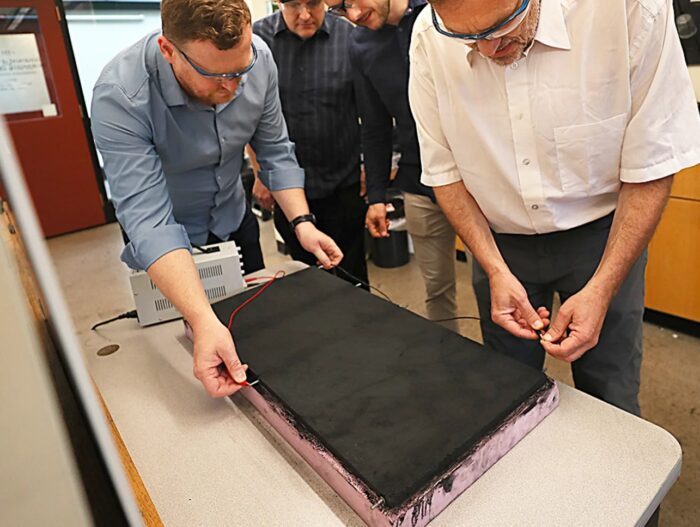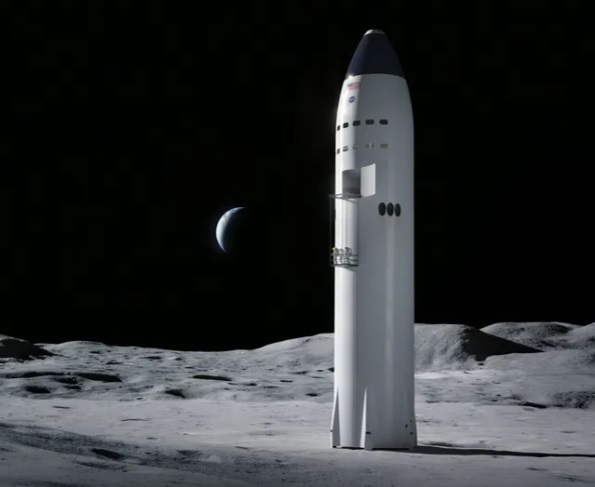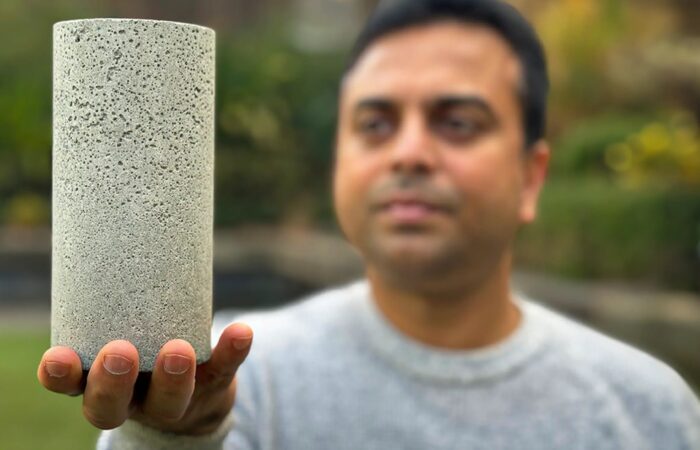Jun
27
2024
 Most major cities in the US experienced a major fire sometime between 1860 and 1920. Actually these fires, called conflagrations, have been occurring since colonial times and into the middle of the 20th century, but saw a peak in the late 19th and early 20th century. Many cities experienced multiple conflagrations, and in the 19th century was responsible for more loss of property than any other phenomenon.
Most major cities in the US experienced a major fire sometime between 1860 and 1920. Actually these fires, called conflagrations, have been occurring since colonial times and into the middle of the 20th century, but saw a peak in the late 19th and early 20th century. Many cities experienced multiple conflagrations, and in the 19th century was responsible for more loss of property than any other phenomenon.
Why this is true is an interesting historical story. But in the world of social media, especially platforms like TikTok, history may seem irrelevant. I have been reviewing videos on TikTok and it’s been quite the journey. I find it interesting that each social media platform has its own subculture within the broader social media culture, which itself is a subculture of the broader culture. In any case, what I have found is that TikTok is a cesspool of confident ignorance. Obviously there is lots of kinds of content there, and some of it good, but there is also a high proportion of people just making stuff up and presenting it to the world as if it were some great realization or bit of wisdom.
I have been thinking quite a bit about what this phenomenon actually is. I think a large part of it may be generational as well as just part of the changing times brought to us by social media. My overall impression is that TikTok videos are primarily about performance. Everything in infotainment. I often find it difficult to determine if someone believes what they are saying or not, and am often left with the impression that even they don’t know. More precisely, they don’t care – whether or not something is true is irrelevant in the world of TikTok. Engagement matters. Performance matters. All ideas are equally valid.
Continue Reading »
Jun
24
2024
 I know it’s only been a couple of weeks since I wrote about cement, but now I need to write about concrete, or potential version of concrete that is able to function as a battery. If we can get the technology to work this could an extremely useful item for a future of green energy.
I know it’s only been a couple of weeks since I wrote about cement, but now I need to write about concrete, or potential version of concrete that is able to function as a battery. If we can get the technology to work this could an extremely useful item for a future of green energy.
The idea is one example of a more general idea – making structural material that can double as energy storage, either as a battery or supercapacitor. Imagine, for example, if the frame of your car was its battery. Similarly, imagine if the foundation of your house was a massive supercapacitor. That is the idea behind an MIT research project, which right now is in the proof-of-concept laboratory phase.
The researchers added carbon black to cement and the usual other ingredients to make concrete that can function as a supercapacitor. The carbon black is highly conductive, and it can form many branching tendrils in the concrete. These conductive bits are separated by insulating bits – and that is the basic structure of a capacitor. Charge can build up in the conductive carbon black and be maintained by the insulating layers.
At this point their test material can store 300 watt hours per cubic meter. A typical US home uses about 30 kwh per day, so would need 100 cubic meters to have one day’s worth of energy storage. That is in the order of magnitude of the volume of concrete in a, say, 1,500 sq foot home’s foundation (about 50 cubic meters). Larger homes would have larger foundations, and of course the foundations can be made deliberately thick to increase the storage. In other words, this is a useful amount of energy, theoretically. Any incremental advances in energy density would also be very useful, and the researchers are working on that.
Continue Reading »
Jun
18
2024
 What killed off the dodo? Humans first arrived at Mauritius island in the late 1500s. They found on this island fat flightless birds who nested on the ground and were a convenient way to restock their ship’s food supply. Within 80 years the dodo went extinct. But hunting was not the only, and maybe not even the primary, cause of their extinction. Rather it was likely something that the humans brought with them – invasive species. One species in particular tends to follow humans every where we go, causing havoc on any local ecosystem not already adapted to them – rats.
What killed off the dodo? Humans first arrived at Mauritius island in the late 1500s. They found on this island fat flightless birds who nested on the ground and were a convenient way to restock their ship’s food supply. Within 80 years the dodo went extinct. But hunting was not the only, and maybe not even the primary, cause of their extinction. Rather it was likely something that the humans brought with them – invasive species. One species in particular tends to follow humans every where we go, causing havoc on any local ecosystem not already adapted to them – rats.
Dodos nested on the ground and typically had one large egg per nest. This was also a convenient food source for invasive rats, who quickly multiplied and decimated the dodo population. There were other invasive species as well (monkeys and pigs), and there was also habitat loss due to human activity – all of these factors put stress on the dodo population that was unsustainable.
It is an unfortunate unintended consequence of human history that as we explored and populated the world, rats followed us. Rats now exist on every continent except Antarctica, and they are likely the most populous mammal species in the world. They are a clever and adaptive species, and are very good at stowing away. They also reproduce very quickly, with a single female able to produce 50 pups per year. They also have a low mortality rate because they live in communities and protect their young.
Continue Reading »
Jun
17
2024
 This is a great scientific question because it challenges how we ask and answer scientific questions. Are animals conscious? This is a question discussed in a recent BBC article that piqued my interest. They eventually get to a question that they should have opened with – how do we specifically define “consciousness”? We can’t answer questions about an alleged phenomenon unless we know what it is. Ideally we would have an operational definition, a list of inclusion and exclusion criteria that need to be met to fit the definition.
This is a great scientific question because it challenges how we ask and answer scientific questions. Are animals conscious? This is a question discussed in a recent BBC article that piqued my interest. They eventually get to a question that they should have opened with – how do we specifically define “consciousness”? We can’t answer questions about an alleged phenomenon unless we know what it is. Ideally we would have an operational definition, a list of inclusion and exclusion criteria that need to be met to fit the definition.
So I am going to start with this question – how do we define consciousness? I think there are at least two different contexts here. In medicine we use the term to refer to different states in people. We know, from our own experience, that humans are conscious, and from one point of view we define consciousness as what humans experience. We assume other fully functioning humans are conscious because we are, and there is no reason to think that other beings with brains similar to our own have a fundamentally different phenomenon driving their behavior. In fact part of consciousness is a theory of mind, which is the ability to think about what other beings think and feel.
So when we talk about consciousness in humans the question revolves around the health and functioning of the brain. Someone might be unconscious, or comatose, or vegetative. We label these as “disorders of consciousness”. We might also discuss consciousness in the context of healthy altered states, such as sleeping. Here we do have very specific technical definitions, based upon neurological examination. However, even here our definition is being challenged by new technology, such as functional MRI scanning, which may shows signs of subtle consciousness in someone who does not show signs on exam.
Continue Reading »
Jun
13
2024
 No one ever said that nuclear power is simple or easy. It’s a tricky and expensive technology. But it also has tremendous potential to create large amounts of reliable green low carbon energy, and many believe that we cannot ignore this potential if we are going to tackle climate change. Billionaire Bill Gates is one of those people.
No one ever said that nuclear power is simple or easy. It’s a tricky and expensive technology. But it also has tremendous potential to create large amounts of reliable green low carbon energy, and many believe that we cannot ignore this potential if we are going to tackle climate change. Billionaire Bill Gates is one of those people.
In the US, since around 1990, we have generated about 19% of our electricity from nuclear power plants. Nuclear produces about 10% of the world’s power from 440 plants. The average age of a nuclear power plant in the US is 42 years – these plants were designed with a 40 year life expectancy. There have been three plants to go online this century, and the last one before that was completed in 1996 – with a 20 year gap with no new nuclear. The bottom line is that we have not been maintaining our expertise in nuclear reactors. Now we are trying to make up for lost time, but find ourselves far behind.
There are several challenges (this list is not meant to be exhaustive) – the cost of building large nuclear power plants, safety issues, sourcing the fissile material, and storing spent nuclear fuel. But there are also lots of advantages – safe reliable green power, predictable (not variable) power, and a small land footprint. Further, we can choose to build nuclear power plants on existing coal fired plant sites. This also has several advantages – the new plant can use existing connections to the grid, will minimize the economic impact to the community of shutting down a job source, and much of the site work is already done.
Continue Reading »
Jun
11
2024
 Commenter Lal asks in the topic suggestions:
Commenter Lal asks in the topic suggestions:
“Media reports that light has been travelling from that distant galaxy for 13 and a half billion years, which I assume is true, but this neither represents the original nor the current distance to that galaxy in terms of light years. I would be interested to know where we lie in the expanding universe compared to these distant galaxies.”
This is a good question, and is challenging to grasp. We need experts who have been thinking about this for decades and who actually understand what’s happening and who can explain it well. Here, I think, is an excellent discussion of this very question. I’ll give a quick summary, but for those interested, you may want to read the full article.
The basic background is that, according to modern cosmological theory, which includes the Big Bang, the universe was a singularity – one point that contained all of spacetime and all matter and energy – about 13.7 billion years ago. This point underwent rapid expansion, at first very rapid, called the inflationary period. Then it continued to rapidly expand, although at a much slower pace, although this rate of expansion has been increasing over time due to dark energy. What happens to the universe when it expands? It’s important to note first that the universe is not expanding into space – space-time itself is expanding.
Matter in the universe gets less dense and hot as the universe expands. At first matter was too hot for particles to exist. Once it cooled enough for protons and neutrons to exist, they mostly formed into hydrogen, but that was still too hot to hold onto electrons so the matter was all plasma. That eventually cooled enough for hydrogen (and some helium and a tiny bit of lithium) atoms to exist – at about 380,000 years after the Big Bang. Since then the matter in the universe has continued to cool and become less dense. However, it was also able to form stars, galaxies, heavier elements, and then lots of interesting things like people.
Continue Reading »
Jun
10
2024
 Back in the 1960 there was a race to land people on the Moon between the US and the Soviet Union. This was very much a part of the cold war, with each country interested in showing off its technical prowess to the world with a technology closely related to that needed to deliver nuclear warheads. All the while everyone insisted this was all peaceful exploration for all mankind. But as a result we advanced our space technology with a lot of downstream effects. And of course there are many legitimate commercial uses of space, which has kept the space industries going for decades.
Back in the 1960 there was a race to land people on the Moon between the US and the Soviet Union. This was very much a part of the cold war, with each country interested in showing off its technical prowess to the world with a technology closely related to that needed to deliver nuclear warheads. All the while everyone insisted this was all peaceful exploration for all mankind. But as a result we advanced our space technology with a lot of downstream effects. And of course there are many legitimate commercial uses of space, which has kept the space industries going for decades.
Now we are poised for a return to the Moon, with essentially the same tensions playing out. As of now there are five nations in the Moon club – those who have achieved soft landings on the Moon (crashing something into the Moon apparently doesn’t count) – the US, the Soviet Union, China, India, and Japan. We have yet to have a private company land something on the Moon, but we are getting close (this year Intuitive Machines launched a mission but did not make it to the lunar surface because of a fuel leak). What are the geopolitical, economic, commercial, technological, scientific and exploration factors pushing us back to the Moon? It’s complicated, but here are some factors that are commonly discussed by experts.
First, we are clearly in the midst of a new geopolitical space race, this time mainly between the US and China. And again, prestige and influence on the international stage is at stake. Strategists also talk of controlling cislunar space – essentially the space between the Earth and the Moon. This means having an infrastructure of rockets, capsules, and stations that can get to the Moon and back, either crewed or uncrewed. This includes positioning monitoring satellites to keep track of what’s happening in cislunar space, including near Earth orbit.
Continue Reading »
Jun
07
2024
 As we are in an election year in the US, there seems to be only one thing on which there is broad agreement – this upcoming election will be consequential. So allow me to share some of my musings about the process of electing our political representatives.
As we are in an election year in the US, there seems to be only one thing on which there is broad agreement – this upcoming election will be consequential. So allow me to share some of my musings about the process of electing our political representatives.
Let me start by laying out what I see as the major considerations for what makes an ideal representative. This is basic stuff, but it’s worth framing the discussion. We tend to evaluate candidates on three major criteria – their overall morality and character, their experience and competence, and their ideological alignment. At least, we profess to evaluate them on these criteria, and to some extent we do. But we also use some heuristic proxies – how charismatic are they, and how good a speaker/debater are they? Sometimes we even use superficial proxies, like height – the taller candidate has won 58 percent of U.S. presidential elections between 1789 and 2008. This is obviously not a huge factor, but may tip the scales in a close election.
One question is, how do we balance the three main factors above, character, experience, and ideology? The conventional wisdom these days, which matches my experience and I think is correct, is that in the past character was not a determinative factor but a minimum bar. In other words, we generally would not necessarily vote for the person with the better character, but lack of character could be disqualifying. Many a candidate has been sunk by a “scandal” involving their moral character (ala “Monkey Business”). Although some politicians have been able to use their charisma and oratory skills to minimize the impact (think Jennifer Flowers). And again we often use dubious proxies – are they “church-going”.
Continue Reading »
Jun
06
2024
 Industry is responsible for 23% of carbon emissions, close to the amount of electricity production (25%) and transportation (28%). We talk a lot about transportation and energy, but industrial carbon is a harder nut to crack. Also, the 23% is direct carbon release from industrial processes, if you include the energy used by industry the contribution is 30%. Industry and manufacturing is increasing at a steady rate worldwide, and by some estimates we could be seeing a 90% increase in CO2 release from industry by 2050. This could wipe out any gains we make in the energy and transportation sectors.
Industry is responsible for 23% of carbon emissions, close to the amount of electricity production (25%) and transportation (28%). We talk a lot about transportation and energy, but industrial carbon is a harder nut to crack. Also, the 23% is direct carbon release from industrial processes, if you include the energy used by industry the contribution is 30%. Industry and manufacturing is increasing at a steady rate worldwide, and by some estimates we could be seeing a 90% increase in CO2 release from industry by 2050. This could wipe out any gains we make in the energy and transportation sectors.
The two largest contributors to direct industrial carbon release are steel and cement. Cement production is responsible for about 8% of CO2 emissions, about a third of industrial release. Another third is from steel. So these two industries are a ripe target for reducing carbon emissions. To put the carbon footprint into perspective, if cement production were a country, it would be the third largest emitter after the USA and China.
The world produces 4.4 billion tons of concrete each year (cement is a main ingredient in concrete). This is excepted to increase to 5.5 billion tons by 2050. Some type of cement has been used by people for about 12,000 years, with the first concrete dating to about 800 BC. The Romans perfected concrete, and built an empire out of it. Today cement and concrete are essential building materials for our modern world.
About half of the CO2 from cement production comes from the following chemical reaction – CaCO3 + heat → CaO + CO2. CaCO3 is limestone, and the CaO is what is known as clinker, a main ingredient in cement. The other half of CO2 emissions comes from the energy necessary to heat the limestone to drive the reaction. Some of that CO2 is then absorbed back by concrete, but that takes decades. There are lots of proposals for how to reduce the carbon footprint of cement and concrete, or even eliminate it. The main barrier is that any such process needs to be done on a massive scale – able to make 4.4 billion tons per year and growing.
Continue Reading »
Jun
03
2024
Which is worse – clickbaity headlines for news articles that are factually correct, but may be playing up a sensational angle, or straight-up misinformation? It depends on what you mean by “worse”. A new study tries to address this information, with some interesting findings.
Misinformation is an increasingly important topic, one with far reaching implications for society. Our individual lives and our society is increasingly run on information. It is a critical resource, and the ability to evaluate and utilize information may be a determining factor in our quality of life. My favorite example remains Steve Jobs, because he is such a stark example. He was one of the richest people on the planet, with every physical resource at his disposal, and was a titan of an information industry. And yet he died prematurely of a potentially curable disease. He chose to delay mainstream treatment in order to pursue “natural” therapies that were ultimately worthless. We cannot know for sure what would have happened if he did not take this course, but his odds of survival would have been better.
At a societal level the most visible impact that our information ecosystems have deals with politics and public health. We are facing a rather dramatic decision regarding the next presidential election in the US, and this will ultimately be determined by how people are accessing and evaluating information. This has always been the case in a democracy, but I think most people alive today have not experienced a divergence of narrative and opinion as intense as we have today.
We also just when through the worst pandemic in a century, which brought into focus every issue dealing with misinformation. How do we deal with it in an age of social media? How do we balance the interests of making sure people get accurate health information so they can make informed choices, and freedom of speech and the value of open debate? There is no one correct answer, we just have to choose our tradeoffs.
Continue Reading »
 Most major cities in the US experienced a major fire sometime between 1860 and 1920. Actually these fires, called conflagrations, have been occurring since colonial times and into the middle of the 20th century, but saw a peak in the late 19th and early 20th century. Many cities experienced multiple conflagrations, and in the 19th century was responsible for more loss of property than any other phenomenon.
Most major cities in the US experienced a major fire sometime between 1860 and 1920. Actually these fires, called conflagrations, have been occurring since colonial times and into the middle of the 20th century, but saw a peak in the late 19th and early 20th century. Many cities experienced multiple conflagrations, and in the 19th century was responsible for more loss of property than any other phenomenon.
 I know it’s only been a couple of weeks since
I know it’s only been a couple of weeks since  What killed off the dodo? Humans first arrived at Mauritius island in the late 1500s. They found on this island fat flightless birds who nested on the ground and were a convenient way to restock their ship’s food supply. Within 80 years the dodo went extinct. But hunting was not the only, and maybe not even the primary, cause of their extinction. Rather it was likely something that the humans brought with them – invasive species. One species in particular tends to follow humans every where we go, causing havoc on any local ecosystem not already adapted to them – rats.
What killed off the dodo? Humans first arrived at Mauritius island in the late 1500s. They found on this island fat flightless birds who nested on the ground and were a convenient way to restock their ship’s food supply. Within 80 years the dodo went extinct. But hunting was not the only, and maybe not even the primary, cause of their extinction. Rather it was likely something that the humans brought with them – invasive species. One species in particular tends to follow humans every where we go, causing havoc on any local ecosystem not already adapted to them – rats. This is a great scientific question because it challenges how we ask and answer scientific questions. Are animals conscious? This is a question discussed in a
This is a great scientific question because it challenges how we ask and answer scientific questions. Are animals conscious? This is a question discussed in a  No one ever said that nuclear power is simple or easy. It’s a tricky and expensive technology. But it also has tremendous potential to create large amounts of reliable green low carbon energy, and many believe that we cannot ignore this potential if we are going to tackle climate change. Billionaire Bill Gates is one of those people.
No one ever said that nuclear power is simple or easy. It’s a tricky and expensive technology. But it also has tremendous potential to create large amounts of reliable green low carbon energy, and many believe that we cannot ignore this potential if we are going to tackle climate change. Billionaire Bill Gates is one of those people. Commenter Lal asks in the topic suggestions:
Commenter Lal asks in the topic suggestions: Back in the 1960 there was a race to land people on the Moon between the US and the Soviet Union. This was very much a part of the cold war, with each country interested in showing off its technical prowess to the world with a technology closely related to that needed to deliver nuclear warheads. All the while everyone insisted this was all peaceful exploration for all mankind. But as a result we advanced our space technology with a lot of downstream effects. And of course there are many legitimate commercial uses of space, which has kept the space industries going for decades.
Back in the 1960 there was a race to land people on the Moon between the US and the Soviet Union. This was very much a part of the cold war, with each country interested in showing off its technical prowess to the world with a technology closely related to that needed to deliver nuclear warheads. All the while everyone insisted this was all peaceful exploration for all mankind. But as a result we advanced our space technology with a lot of downstream effects. And of course there are many legitimate commercial uses of space, which has kept the space industries going for decades. As we are in an election year in the US, there seems to be only one thing on which there is broad agreement – this upcoming election will be consequential. So allow me to share some of my musings about the process of electing our political representatives.
As we are in an election year in the US, there seems to be only one thing on which there is broad agreement – this upcoming election will be consequential. So allow me to share some of my musings about the process of electing our political representatives. Industry is responsible for
Industry is responsible for 




